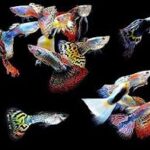The Foundation of Physical Appearance and Personality Perception
Understanding how people interpret physical features has fascinated psychologists, sociologists, and even artists for centuries. One of the most compelling combinations in this regard is the pairing of brown hair and green eyes. Often viewed as rare and captivating, this combination may carry more psychological and social weight than many assume. The relationship between outward appearance and how individuals are perceived or how they perceive themselves can be complex. In examining the psychology of these specific traits, it is essential to explore their cultural meanings, social implications, and subconscious impact.
The Cultural Significance of Hair and Eye Color
Throughout history, different societies have attached symbolic meanings to hair and eye color. Brown hair, commonly found across many populations, is often associated with stability, reliability, and maturity. It tends to be seen as more natural and grounded compared to lighter shades, such as blonde or red. Green eyes, however, are far less common and often spark curiosity and intrigue. They are frequently depicted in literature and art as mystical or alluring, evoking feelings of enchantment.
In Western culture, particularly in film and literature, green eyes have often been linked with characters who possess mystery or unpredictability. Whether cast as villains, heroes, or love interests, these characters tend to stand out, not just because of what they do, but because of how they look. Pairing green eyes with brown hair intensifies this mystique. The contrast between the relatively common and the rare can give individuals with this combination a kind of psychological duality, balancing familiarity with uniqueness.
How Traits Influence First Impressions
First impressions are frequently shaped by facial features and coloring. Hair and eye color can play a central role in this immediate judgment process. People with brown hair and green eyes may experience a unique intersection of assumptions. Brown hair can project warmth and approachability, while green eyes may suggest intellect or emotional depth. This duality can lead others to perceive them as both trustworthy and intriguing.
Psychological studies have shown that individuals make snap judgments about personality traits such as intelligence, trustworthiness, and sociability within seconds of meeting someone. These judgments, though not always accurate, are influenced heavily by facial cues, including hair and eye color. Someone with green eyes may be presumed to possess a more introspective or intense nature, while brown hair might temper this assumption with an added sense of balance and realism.
Genetic Rarity and Social Interpretation
From a genetic perspective, the combination of brown hair and green eyes is relatively uncommon. While brown hair itself is widespread, green eyes occur in only a small percentage of the global population. This makes the pairing quite distinctive. Rarity often draws attention, and in human psychology, that attention can translate into perceived specialness or uniqueness. This can influence how others treat someone, which in turn shapes how that person sees themselves.
There is also an element of exoticism that society tends to project onto features that deviate from the norm. This is particularly evident in media portrayals and advertising. People with unique combinations are often used in campaigns to symbolize individuality, creativity, and confidence. This can have a reinforcing effect on individuals who possess these traits, leading them to internalize these projected characteristics.
Identity Formation and Self-Image
Over time, repeated exposure to societal messages about one’s appearance can influence personal identity. For those with brown hair and green eyes, the mix of commonality and distinctiveness may contribute to a balanced but nuanced self-image. They may feel connected to the mainstream due to their hair color while also feeling set apart due to their eye color. This balance can foster a strong sense of individuality tempered by groundedness.
The self-perception associated with these traits often reflects broader cultural narratives. In Western societies that value both uniqueness and relatability, this combination can offer a psychological edge. People may feel empowered to explore different aspects of their personality, expressing creativity and intellect while also maintaining a sense of social ease and acceptance.
Laying the Groundwork for Deeper Exploration
The pairing of brown hair and green eyes is more than a genetic coincidence; it is a foundation for a fascinating psychological profile. This first part of the exploration lays the groundwork for understanding how cultural meanings, social perceptions, and individual identity intersect. As we move forward, we will delve into how these traits influence relationships, self-esteem, and broader psychological patterns. The next part will examine how these physical features play a role in interpersonal dynamics and emotional intelligence, offering even deeper insight into the psychology behind them.
Interpersonal Dynamics and Emotional Intelligence Through the Lens of Appearance
The way people connect with others often begins before a single word is spoken. While personality, behavior, and communication style certainly shape relationships, physical appearance plays a powerful—if subtle—role in how those interactions develop. When individuals carry distinctive combinations like brown hair and green eyes, they often bring with them unspoken expectations and social perceptions that influence the nature of their personal relationships. This part of the exploration will focus on how these physical features might affect emotional intelligence, relationship dynamics, and social engagement, all through the lens of appearance psychology.
The Social Psychology of Attractiveness and Uniqueness
Human beings are wired to notice physical features, often associating certain traits with underlying characteristics. This instinct goes back to evolutionary roots where facial symmetry, coloring, and expressions served as cues for health, safety, and compatibility. In modern society, however, these instincts have become more nuanced and are often filtered through the lens of culture and media. Individuals with the pairing of brown hair and green eyes represent a fusion of familiarity and rarity. While brown hair is a common and culturally neutral trait, green eyes are relatively rare and are often linked to uniqueness and intrigue.
This duality can make people with this combination socially magnetic. In friendships or romantic contexts, they may be approached with both a sense of comfort and curiosity. This initial reaction can lead to deeper engagement, especially when their personality aligns with or contradicts the expectations set by their appearance. For example, someone who looks mysterious due to their green eyes might be perceived as emotionally deep, even if their behavior is quite extroverted or lighthearted.
People who possess both a common and uncommon trait in their facial appearance often experience interactions that are layered with subtle assumptions. These assumptions can influence not just how others treat them but how they respond socially, whether by confirming those expectations or challenging them. Such experiences often serve as the beginning of emotional intelligence development.
Facial Features as Nonverbal Communication
Much of human communication is nonverbal, and facial features play a major role in how messages are conveyed and interpreted. Brown hair tends to be seen as a trait that signals reliability, calmness, and intelligence. Green eyes, by contrast, can appear expressive and enigmatic, drawing attention to the eyes as windows to deeper emotion or thought. The eyes often do the emotional “speaking,” and when they are a striking shade like green, they tend to command more attention in social interactions.
Because of this, individuals with green eyes may find themselves scrutinized more closely during conversations. Their eye movements, expressions, and emotional responses might be interpreted more intensely, leading them to develop heightened emotional awareness. Whether conscious of it or not, they may learn to manage expressions and body language more carefully. This careful navigation of nonverbal communication can lead to increased empathy and sensitivity to others’ emotional states.
This process may also make them more attuned to subtle changes in tone or mood. Being under observation, even in subtle ways, often encourages people to become observers themselves. In social situations, they may notice when others are uncomfortable, curious, or feeling insecure, and adjust their behavior accordingly. This adjustment is not necessarily strategic but rather becomes part of an instinctive response system that defines emotionally intelligent behavior.
How Appearance Impacts Social Roles and Interactions
In many social settings, individuals unconsciously take on roles that reflect how others perceive them. People with brown hair and green eyes may be seen as charismatic yet grounded, mysterious yet warm. These mixed messages can lead them to occupy unique spaces within social circles. They might be the confidant to some, the enigma to others, or even the unspoken leader in a group dynamic. These roles are not assigned formally but emerge from subtle, often subconscious cues that govern social behavior.
Because they are perceived as both approachable and intriguing, individuals with this appearance are often placed in emotionally complex roles. In friendships, they may be the person others go to for deep, meaningful conversations. In romantic relationships, they may be idealized or held to certain emotional expectations. The ability to fulfill these roles—or reject them—can have a profound impact on self-esteem and personal growth.
Social roles are also shaped by how people internalize feedback. Positive reinforcement from peers about one’s physical appearance can increase confidence, which in turn enhances social performance. However, expectations based on looks can also create pressure. Someone who is constantly praised for having “striking eyes” might feel they need to live up to a deeper emotional or intellectual standard, even if it does not align with their true personality. Navigating this tension is a key component of developing authenticity in relationships.
Attachment Styles and Physical Perception
Psychologists often examine how childhood experiences shape adult relationships, particularly through the lens of attachment theory. While attachment style is largely based on early interactions with caregivers, appearance can also play a subtle role in how people experience and interpret intimacy. For individuals with green eyes and brown hair, their appearance might draw certain types of partners or friends who are intrigued by the surface but seek emotional depth.
This dynamic can influence how securely or anxiously a person attaches to others. If they are frequently misunderstood or idealized based on their appearance, they may develop cautiousness in relationships, wanting to be seen for who they truly are rather than how they look. On the other hand, consistent, healthy validation can contribute to secure attachments and a stronger sense of self-worth.
Additionally, because they often experience varied social reactions, people with these features may learn to adapt quickly to different interpersonal styles. This adaptability can be an asset in emotional regulation, a key component of emotional intelligence. They may excel in environments that require empathy, emotional support, or subtle leadership. Whether in professional or personal spaces, these traits can open doors to deep, meaningful connections.
Perceived Authenticity and Trustworthiness
One fascinating aspect of appearance psychology is how certain traits influence perceived authenticity. Brown hair is typically linked to reliability and honesty, traits that can immediately influence how trustworthy a person appears. Green eyes, while less associated with warmth, often imply sincerity due to their expressiveness. The combination creates a facial profile that many perceive as emotionally genuine, even before any conversation begins.
This perceived authenticity can be a social advantage. People are more likely to confide in someone they feel is sincere. They may also be more forgiving of mistakes or more open to emotional connection. However, there is also a burden that comes with this perception. When someone is viewed as trustworthy, they are often placed in roles of emotional labor—carrying the secrets, frustrations, and vulnerabilities of others.
In this way, the combination of brown hair and green eyes can foster both connection and responsibility. Emotional intelligence becomes not just a personal strength but a social expectation. How an individual manages this expectation can determine whether they thrive or feel overwhelmed in their interactions.
Physical Traits as Catalysts for Emotional Growth
Appearance is more than a reflection in the mirror; it is a dynamic part of how people form and manage relationships. For individuals with brown hair and green eyes, their distinctive look often acts as a catalyst for complex social experiences and the development of emotional intelligence. Through the subtle interplay of perception and interaction, they may find themselves navigating emotional landscapes with heightened awareness and empathy.
Identity, Self-Perception, and the Inner Narrative of Uncommon Beauty
The human experience is deeply intertwined with self-perception. From childhood through adulthood, the way a person sees themselves helps shape how they interpret the world, build relationships, and pursue goals. For individuals with physical traits that both stand out and feel familiar—like the combination of brown hair and green eyes—self-image can become a complex blend of inherited narratives, social reflections, and private meaning. This part of the discussion focuses on how this distinct physical pairing can influence identity formation, personal confidence, and internal dialogue throughout a lifetime.
The Foundations of Self-Image and Appearance
Identity begins to form early in life, shaped largely by family, environment, and social cues. A child with green eyes and brown hair might receive comments from others highlighting how “special” or “unusual” their eyes are. While such attention can feel flattering, it also begins to shape their understanding of beauty and uniqueness before they can fully grasp what those ideas mean. These early observations may anchor the belief that part of their value lies in how they are seen by others.
As they grow older, this narrative may deepen. If their features are constantly mentioned, they may come to associate personal worth with physical distinctiveness. This isn’t necessarily negative—feeling unique can empower confidence—but it can also create internal tension when identity is reduced to appearance. For those who seek deeper connection with others and themselves, this contrast often leads to reflection on who they are beyond how they look.
Cultural Influences on Identity and Aesthetic Value
Cultural ideals play a massive role in how individuals interpret their features. Brown hair is often framed as practical, reliable, and grounded. Green eyes, conversely, are frequently associated with mystery, creativity, or exoticism in literature, film, and pop culture. Together, these traits carry layered symbolism. They may reflect a person who is dependable yet quietly vibrant, someone who blends in but remains unforgettable.
In some cultures, green eyes are romanticized as rare and alluring, while in others, brown hair is prized for its connection to natural beauty and authenticity. Navigating these ideals can lead individuals to feel proud of their appearance, but it can also cause internal conflict if their features do not align with mainstream beauty standards where they live. Identity, in this context, becomes a negotiation between how one is culturally perceived and how one desires to be understood.
People often internalize the values placed on physical traits, even when they’re not conscious of it. An individual might feel confident in their green eyes because society rewards uniqueness, but if those same eyes draw unwanted attention or stereotypes, the feelings can quickly turn to discomfort or self-doubt. These contradictory experiences are common in identity development and can ultimately lead to a more layered, nuanced self-concept.
Mirror Reflections and the Inner Narrative
Looking into a mirror is a private ritual that can carry deep emotional weight. It is not just about checking for symmetry or style—it is often about asking, “Who am I today?” For individuals with distinct features like green eyes and brown hair, the mirror might also serve as a space where admiration and critique coexist. On some days, the color of their eyes might remind them of a compliment, a meaningful memory, or a sense of individuality. On other days, they might focus on what they lack compared to others.
The way someone talks to themselves in these moments reveals the inner narrative at work. This voice—often shaped by years of social feedback—can either affirm their beauty and worth or undermine it with quiet insecurity. Self-perception becomes a filter that influences every interaction, decision, and expression. People who have been defined by their appearance may begin to question whether they are truly seen for who they are inside. This can spark a desire to assert personality, intelligence, or creativity as equally important parts of their identity.
This internal narrative doesn’t remain static. It evolves as individuals experience relationships, challenges, and personal growth. Someone who once felt defined by others’ opinions about their appearance may learn, over time, to define themselves on their own terms. Green eyes and brown hair may remain a noticeable part of their identity, but no longer the dominant one. Instead, those features become part of a broader story—one that reflects resilience, complexity, and the journey toward self-acceptance.
Identity and the Search for Belonging
Humans have an innate desire to belong—to feel seen, understood, and accepted. Physical appearance can either help or hinder this process. For those with uncommon features, the feeling of being “different” may spark both pride and isolation. They may feel special, but also separate from peers who blend in more easily. Belonging, in this sense, is not just about fitting into groups but about feeling at peace with oneself while being part of something larger.
In adolescence, the need to fit in is especially strong. Young people with green eyes and brown hair may struggle if their peers value more conventional or familiar traits. They might stand out in ways they cannot control, leading to both admiration and unwanted attention. Over time, they may seek communities—both in real life and online—that celebrate individuality. Finding those spaces can be transformative, allowing them to embrace their identity more fully.
Belonging is not always about being the same; sometimes it’s about being recognized for one’s uniqueness. Individuals who are consistently told they are “different in a good way” may learn to take ownership of their identity and lean into what makes them distinct. This ownership can become a form of empowerment, allowing them to express themselves with confidence and authenticity, rather than shrinking to meet others’ expectations.
The Role of Self-Esteem and Personal Growth
Self-esteem plays a major role in how people construct their identity. For individuals with visually striking features, esteem is often shaped by early compliments, social reactions, and even media comparisons. But high self-esteem does not automatically follow positive attention. In fact, when physical praise feels disconnected from internal validation, it can feel hollow.
True self-esteem grows from the ability to appreciate oneself holistically. A person with green eyes and brown hair may start their journey being proud of their looks but later realize that their value runs deeper. They may begin to develop skills, pursue passions, or cultivate character traits that feel more reflective of who they truly are. The balance between outward appearance and inward substance becomes central to their personal development.
People who embrace their features as part of—not the whole of—their identity often demonstrate greater emotional maturity. They understand that beauty can open doors, but integrity, kindness, and purpose are what keep those doors open. This realization can fuel a deeper commitment to personal growth, as they seek meaning beyond surface impressions. Identity then becomes not a fixed label but a dynamic evolution of self-awareness.
Defining Identity Beyond the Surface
The combination of brown hair and green eyes may be uncommon, but its impact on personal identity is far-reaching. These physical traits act as mirrors—reflecting not just how others see an individual, but how they come to see themselves. As this part has shown, appearance can shape early narratives of beauty and belonging, while also prompting deeper questions about self-worth, authenticity, and growth.
From mirror reflections to cultural ideals, the journey of identity is deeply personal. For those with distinctive features, the challenge is not simply to be noticed, but to be known—for all that they are, inside and out. As individuals learn to move beyond surface impressions, they begin to define their identity on richer, more meaningful terms. In the final part of this article, attention will turn toward how this identity translates into life choices, aspirations, and the legacies people create through their presence in the world.
Purpose, Ambition, and the Legacy of Distinctive Traits
As individuals mature, their identities expand to include not only how they see themselves but also how they envision their future and what kind of impact they hope to make. While physical features such as brown hair and green eyes may begin as aesthetic details, they often evolve into symbols of identity, uniqueness, and expression. These traits, consciously or unconsciously, can influence choices in career, relationships, creativity, and self-definition. In this final part of the article, attention turns to how appearance interacts with ambition, purpose, and the story a person leaves behind.
The Subtle Influence of Appearance on Life Trajectories
Although it is tempting to think of physical appearance as separate from life decisions, it often exerts a quiet but consistent influence. A person with striking features may experience different social responses, from compliments and attention to assumptions and stereotypes. These responses, repeated over time, can shape self-expectations, behavior, and personal drive.
For someone with green eyes and brown hair, often perceived as mysterious yet grounded, there may be a sense of duality in how they are treated. On one hand, they may be praised for uniqueness or attractiveness. On the other hand, they may feel pressure to live up to an image others project onto them. This can lead to intentional choices—either embracing these expectations or actively rejecting them in search of more authentic paths.
In some cases, individuals internalize positive feedback and develop a strong sense of self-confidence. They may enter public-facing careers such as acting, teaching, marketing, or politics, where appearance and presence play significant roles. In other cases, the desire to be seen for more than appearance may push them toward fields where intellect, empathy, or creativity take center stage. Either way, appearance becomes a silent partner in shaping how one steps into the world.
Creative Expression and the Power of Being Seen
People with distinctive features often find themselves drawn to creative expression—not because they are defined by their looks, but because they have learned from an early age that perception matters. Whether through art, writing, fashion, or performance, they may use their appearance as a launchpad for deeper storytelling. Green eyes, with their rare hue and shifting tones, often carry poetic associations, while brown hair symbolizes steadiness and warmth. These traits can serve as metaphors for the internal worlds individuals wish to share.
Artists, for example, might explore the contrast between how they are seen and how they feel. Writers may channel their experiences into characters who wrestle with visibility, identity, or longing for authenticity. Musicians or actors may feel that their presence carries both symbolic and literal weight, offering a way to connect with audiences who also feel both known and unknown.
Even outside the arts, this heightened awareness of how appearance shapes interaction can lead to careers in counseling, social work, or advocacy—roles where the ability to read emotional undercurrents and reflect personal experience becomes a strength. In this way, green eyes and brown hair are not just personal traits, but part of a larger narrative about being seen in a complex world.
Relationships and Emotional Depth
Physical traits can also influence how relationships begin and evolve. Individuals with green eyes and brown hair often report being remembered easily, even after a brief interaction. This memorability can create opportunities for connection, but it can also bring challenges, especially when others make assumptions based on how someone looks rather than who they are.
In romantic relationships, these features are often idealized. Green eyes are frequently romanticized as captivating or mysterious, while brown hair is linked to approachability and warmth. These impressions can enhance initial attraction but may also lead to shallow expectations. Individuals who are often complimented for their looks may grow weary of surface-level interest and crave deeper emotional resonance.
Friendships, too, are influenced by these dynamics. People who stand out physically often become the center of attention without trying, which can sometimes spark admiration or envy. Navigating these social dynamics requires emotional intelligence and self-awareness. Over time, many individuals with distinctive features learn how to protect their boundaries, cultivate sincere connections, and surround themselves with people who value their depth over their appearance.
Building a Legacy Based on Authenticity
As individuals progress through adulthood, many begin to think about their legacy—what they will leave behind, how they will be remembered, and what kind of life they want to live. While physical traits may influence the early chapters of their story, the later chapters are often defined by intention, action, and meaning. This transition marks an important shift from being shaped by appearance to using it as a platform for deeper impact.
A person with green eyes and brown hair may eventually realize that their distinctiveness can be used as a form of advocacy. They might speak out about the pressures of beauty standards, offer support to others who feel defined by how they look, or use their visibility to challenge stereotypes. By doing so, they reclaim control over their narrative and use their presence to empower others.
In professional life, this clarity of identity often translates into leadership, mentorship, or community involvement. People who have wrestled with the implications of being “different” often develop empathy and perspective—qualities that serve them well in guiding others. Their legacy becomes not just about how they looked, but how they made others feel, the values they stood for, and the example they set through honesty and self-expression.
The Evolution of Self-Acceptance
Perhaps the most profound legacy of all is self-acceptance. In a world constantly encouraging comparison, the ability to accept and appreciate oneself is a radical act. For someone with features like brown hair and green eyes, this means learning to see their appearance as just one part of a much larger picture. It means recognizing beauty without letting it define worth, and honoring uniqueness without letting it isolate.
Self-acceptance often comes in stages. Early in life, there may be confusion or conflict about what it means to be “different.” Later, there may be attempts to fit in, to downplay what stands out, or to overcompensate by exaggerating confidence. But over time, many individuals find balance. They begin to understand that their features have shaped their journey, but do not limit it. They are not just a face in the crowd, nor a symbol of some abstract ideal. They are whole, complex, and human.
This evolution allows them to live with greater freedom and authenticity. They no longer feel the need to explain themselves or apologize for how they are perceived. Instead, they build lives rooted in purpose, relationships grounded in mutual respect, and identities that reflect both appearance and essence. In doing so, they create a legacy not of image, but of integrity.
More Than Meets the Eye
Physical traits may catch someone’s attention, but it is character, choices, and purpose that ultimately define a life. The combination of brown hair and green eyes is undeniably striking, but its deeper meaning lies in how it influences a person’s journey toward self-awareness, ambition, and impact.
From early impressions to mature identity, these traits shape not just how others see a person, but how that person comes to see themselves. As they grow, they learn to turn appearance into empowerment, attention into influence, and uniqueness into authenticity. In the end, their legacy is not the color of their hair or the shade of their eyes, but the courage with which they lived, the truth they embraced, and the kindness they left behind.










